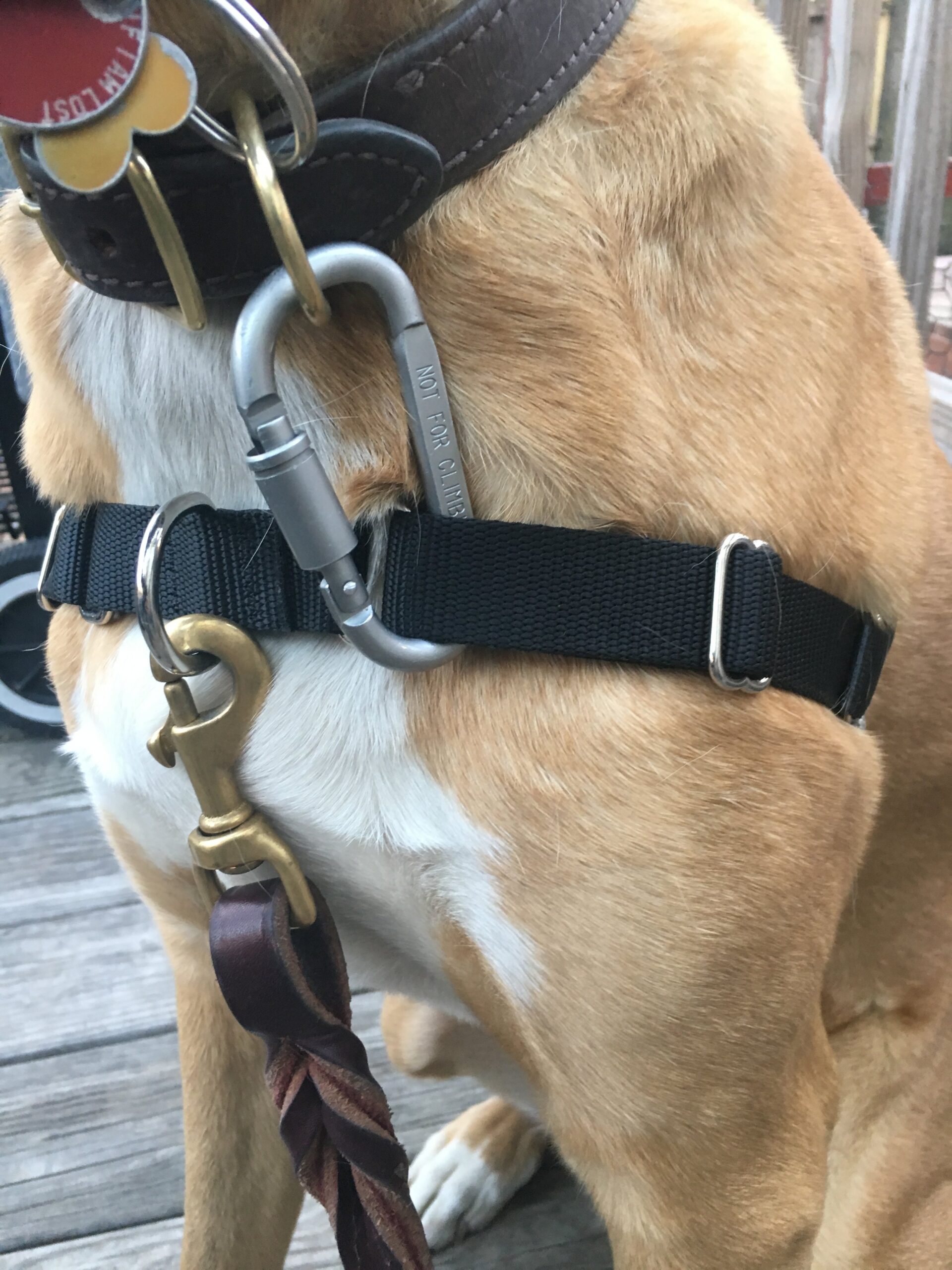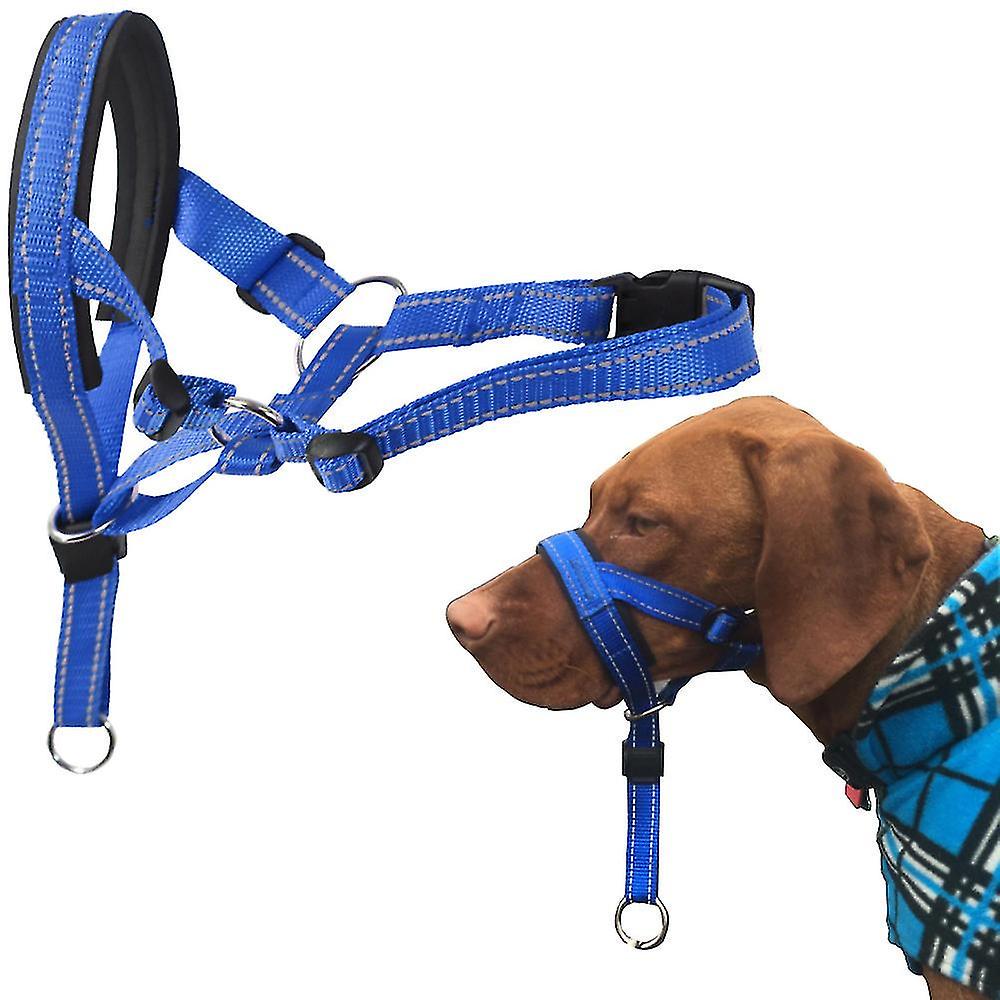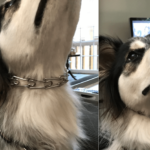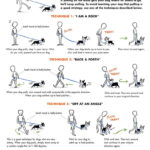How to Transition from a Collar to a Harness: A Step-by-Step Guide
Making the shift from a collar to a harness for your dog can seem like a simple change, but it can have a profound impact on your dog’s comfort, safety, and behavior during walks. How to transition from a collar to a harness is a common question for many dog owners looking for a better walking experience. Collars may be convenient, but they often put strain on your dog’s neck, especially if they pull or have respiratory issues. A harness, on the other hand, offers improved control and distributes pressure more evenly across their body, making walks safer and more comfortable.
In this guide, we’ll take you through a step-by-step process to make the transition as smooth as possible. Whether your dog is hesitant about wearing a harness or you’ve struggled with their pulling behavior in the past, this guide will ensure that your dog gets accustomed to their new walking gear with ease.
Why Transition from a Collar to a Harness?
Before diving into the specifics of the transition, let’s understand why switching from a collar to a harness is so beneficial for your dog.
Safety and Comfort
Collars can sometimes cause strain on your dog’s neck, especially if they tend to pull or tug during walks. This strain can lead to neck injuries, tracheal damage, or discomfort, particularly for small dogs or breeds with sensitive throats. Harnesses, by contrast, distribute pressure evenly across your dog’s chest and back, reducing the risk of injury while ensuring a more comfortable walk.
Key benefits of a harness:
- Even distribution of pressure: Prevents strain on the neck.
- Better control: Offers more security and better walking control.
- Ideal for pullers: Harnesses are especially useful for dogs that tend to pull on their walks.
Better Control
Another major reason to switch to a harness is control. Harnesses give you better leverage over your dog’s movements. This is crucial for dogs that pull or tend to lunge forward during walks. A harness also provides additional safety, especially for breeds with respiratory issues like bulldogs or pugs, who may struggle with collars.
Advantages for control:
- Reduces pulling: Harnesses make it easier to manage your dog’s pulling behavior.
- Improved guidance: Provides more stable control when walking or guiding your dog.
Step-by-Step Guide to Transitioning Your Dog from a Collar to a Harness
Step 1: Introduce the Harness
The first step in the transition is introducing the harness to your dog in a relaxed and positive way. Don’t just put it on your dog right away—let them sniff and explore the harness. Using treats to create positive associations will help your dog accept it more readily.
How to introduce the harness:
- Let them sniff: Allow your dog to explore the harness on their own before putting it on them.
- Positive reinforcement: Use treats and praise when they show interest in the harness.
Tip: If your dog seems nervous about the new object, make the harness experience feel fun and rewarding by offering treats or their favorite toys.
Step 2: Short Wear Sessions
Once your dog is comfortable with the harness, begin short wear sessions indoors. Let your dog wear the harness for 5-10 minutes while supervised. This is important for getting them used to the sensation of something being on their body, but without overwhelming them.
Why short wear sessions are important:
- Gradual adjustment: Starting with short sessions allows your dog to adjust slowly without feeling restricted.
- Monitor comfort: Keep an eye on your dog to ensure they’re not uncomfortable or trying to remove the harness.
Tip: You can distract your dog with treats or toys during this time to keep them engaged.
Step 3: Practice Indoors
Once your dog has adjusted to the harness indoors, start practicing walking around the house. This helps your dog get used to the feeling of the harness while walking. Use the opportunity to teach them to walk calmly with the harness on before going outside.
Why practice indoors:
- Controlled environment: Your dog will be less distracted and will learn better.
- Comfort building: Practice indoors helps your dog become more comfortable before venturing outside.
Tip: Keep the first few indoor walks short and rewarding to maintain a positive experience for your dog.

ALT text: Dog practicing with a harness indoors, getting used to the sensation.
Step 4: First Outdoor Walk
The next step is to take your dog on their first outdoor walk with the harness. Start by choosing a quiet, low-distraction area for their first walk. Keep the walk short, around 10-15 minutes, and keep the leash loose. The goal is to help your dog adjust to the sensation of walking on the leash with the harness while maintaining a calm demeanor.
First outdoor walk tips:
- Choose a quiet area: A park or less crowded street is ideal for a stress-free experience.
- Short duration: Keep the walk short and avoid overwhelming your dog.
- Loose leash: A loose leash helps to promote calm behavior and allows your dog to learn how to walk calmly with the harness.
Tip: Reward your dog for walking calmly with praise or treats throughout the walk.
Step 5: Gradually Increase Duration
As your dog gets more comfortable with their harness, you can begin increasing the walk duration. Start adding 5-minute increments to your walks, and monitor how your dog is adjusting to the new gear. It’s important to not rush this process, as it can take time for your dog to fully adjust.
Why gradual duration increase is essential:
- Comfort and tolerance: Allows your dog to gradually adapt without causing stress.
- Avoid overexertion: It’s crucial not to tire your dog out with too long of a walk too soon.
Tip: Always check the fit of the harness during this phase to ensure it remains comfortable.
Internal Link Suggestion:
By following these steps and giving your dog the time they need to adjust, you can help them transition smoothly from a collar to a harness. In the next section, we will dive into common challenges and how to address them, ensuring a seamless process for both you and your dog.
Stay tuned for more tips to make your dog’s harness transition even easier!
Call to Action:
Ready to make the switch? Get your perfect dog harness today and use the discount code mytopdeals10 for 10% off your order. Make walks safer and more comfortable for your dog!
This is the first half of your detailed guide on how to transition from a collar to a harness. The article covers the initial steps, including introducing the harness, short wear sessions, and the first outdoor walks. Keep reading for more tips on overcoming common challenges and ensuring long-term success.
Common Challenges and Solutions in Transitioning to a Harness
Resistance to Wearing the Harness
It’s not uncommon for dogs to show resistance when first introduced to a harness. If your dog reacts negatively, such as attempting to remove the harness or refusing to walk, it’s important to be patient and avoid forcing it on them. Instead, use positive reinforcement to create a positive association with the harness.
How to address resistance:
- Gradual exposure: Start by allowing your dog to sniff and interact with the harness before attempting to put it on.
- Positive reinforcement: Reward your dog with treats, praise, or play when they wear the harness or even show interest in it.
- Take it slow: If your dog continues to resist, start by letting them wear the harness for short periods around the house before moving to outdoor walks.
Tip: It can take several days or even weeks for a dog to fully accept a harness, so patience is key. Gradually build up to longer wear times, ensuring that your dog is never overwhelmed.
Adjusting the Fit
One of the most critical aspects of a successful transition is ensuring the fit of the harness is correct. If the harness is too tight or too loose, it can cause discomfort or even injury. Regularly check and adjust the fit, especially during the first few weeks of use.
How to adjust the harness fit:
- Check for tightness: Ensure you can fit one or two fingers between the harness and your dog’s body.
- Watch for chafing: Ensure the harness doesn’t rub on sensitive areas, like under the arms or around the neck.
- Use adjustable straps: Most harnesses are adjustable, so make sure to customize the fit to your dog’s unique body shape.
Tip: Always adjust the harness before each walk, as your dog’s body shape can change over time, especially with growth or seasonal weight fluctuations.
Tips for a Smooth Transition to a Harness
Patience and Persistence
Transitioning from a collar to a harness isn’t a process that happens overnight. It may take several days or even weeks for your dog to get used to the new walking experience. Be patient with your dog, and allow them time to adjust. Rushing the process can cause unnecessary stress for both you and your dog, so consistency is crucial.
Key tips for a smooth transition:
- Set small goals: Focus on achieving short, incremental successes such as wearing the harness for longer periods or walking a few steps with the harness on.
- Avoid frustration: If your dog becomes frustrated or anxious, take a break and try again later. Dogs pick up on stress, and it can slow down the transition process.
- Consistency is key: Regular practice will help your dog feel more comfortable over time.
Using Positive Reinforcement
Using positive reinforcement is one of the most effective methods for encouraging your dog to accept the harness and walk calmly with it. Praise and treats will help them form a positive association with the harness, making it more likely they will cooperate in the future.
How to use positive reinforcement:
- Reward good behavior: Praise your dog whenever they walk calmly or behave well while wearing the harness.
- Use treats: Give treats when your dog shows interest in the harness or walks calmly with it on.
- Repeat consistently: Make the experience enjoyable for your dog to encourage continued progress.
Tip: The more your dog associates the harness with rewards, the faster they will adjust to wearing it during walks.
Frequently Asked Questions (FAQs)
What makes Found My Animal products unique?
Found My Animal is renowned for its high-quality, durable pet products that combine both functionality and style. Their customizable harnesses and leashes are made from strong, weather-resistant materials, ensuring they last while keeping your dog comfortable. Additionally, the option for personalization (such as engraving your pet’s name or contact info) makes these products stand out in the pet accessories market.
How can I use the discount code mytopdeals10 at checkout?
To use the discount code mytopdeals10, simply visit Found My Animal’s website, choose your desired items, and proceed to checkout. Enter the code mytopdeals10 in the promo code box to receive a 10% discount on your entire order. It’s quick, easy, and a great way to save while getting the best products for your dog!
What are the benefits of transitioning to a harness for my dog?
Transitioning to a harness offers better control, reduces strain on your dog’s neck, and is ideal for pullers. A harness distributes the pressure evenly across the dog’s chest, ensuring comfort during walks. It also provides more control for owners, making walks more manageable and safer for dogs with respiratory issues or sensitive throats.
How long will it take for my dog to get used to wearing a harness?
The time it takes for your dog to get used to a harness can vary. It could take anywhere from a few days to several weeks, depending on your dog’s temperament and previous experiences. Be patient and allow them time to adjust gradually, rewarding good behavior along the way.
Conclusion: Successfully Transition Your Dog to a Harness
In conclusion, how to transition from a collar to a harness is a manageable process that enhances your dog’s comfort, safety, and your control during walks. By following a step-by-step approach, including introducing the harness gradually, rewarding positive behavior, and adjusting the fit, you can make the transition smooth and stress-free for both you and your dog.
Remember, patience and consistency are key, and with time, your dog will enjoy the increased comfort and safety a harness provides. Whether you’re looking for better control or a more comfortable walking experience, switching to a harness is a smart choice.
Call to Action:
Ready to make the switch? Get your perfect harness today and use the discount code mytopdeals10 for 10% off. Help your dog enjoy safer, more comfortable walks today!

ALT text: Dog comfortably walking in a well-fitted harness.
This is the final half of your guide on how to transition from a collar to a harness. Now that you know the steps and solutions to common challenges, you’re well on your way to achieving successful harness training with your dog. Don’t forget to take your time, reward your dog, and enjoy the improved walking experience!


